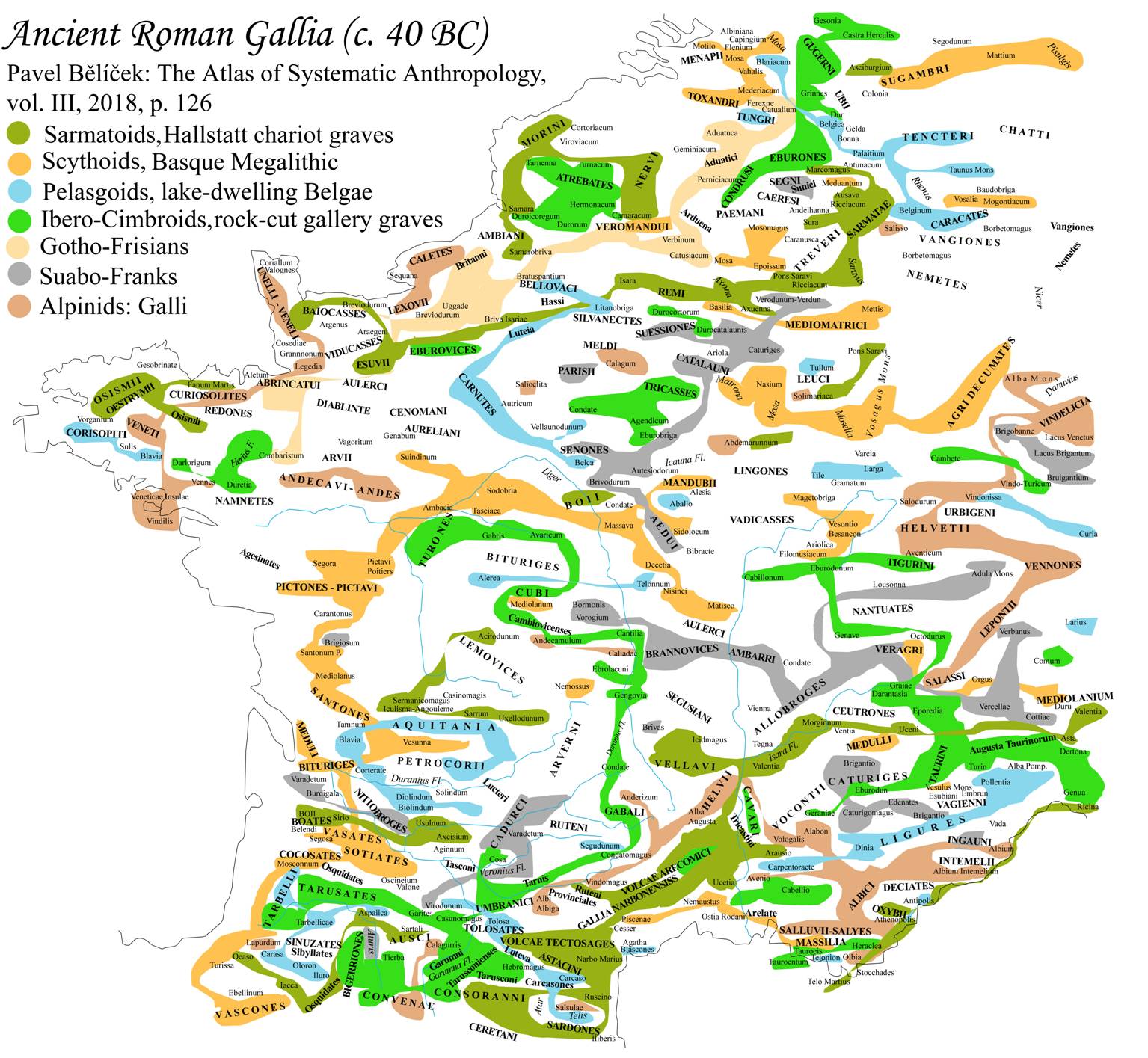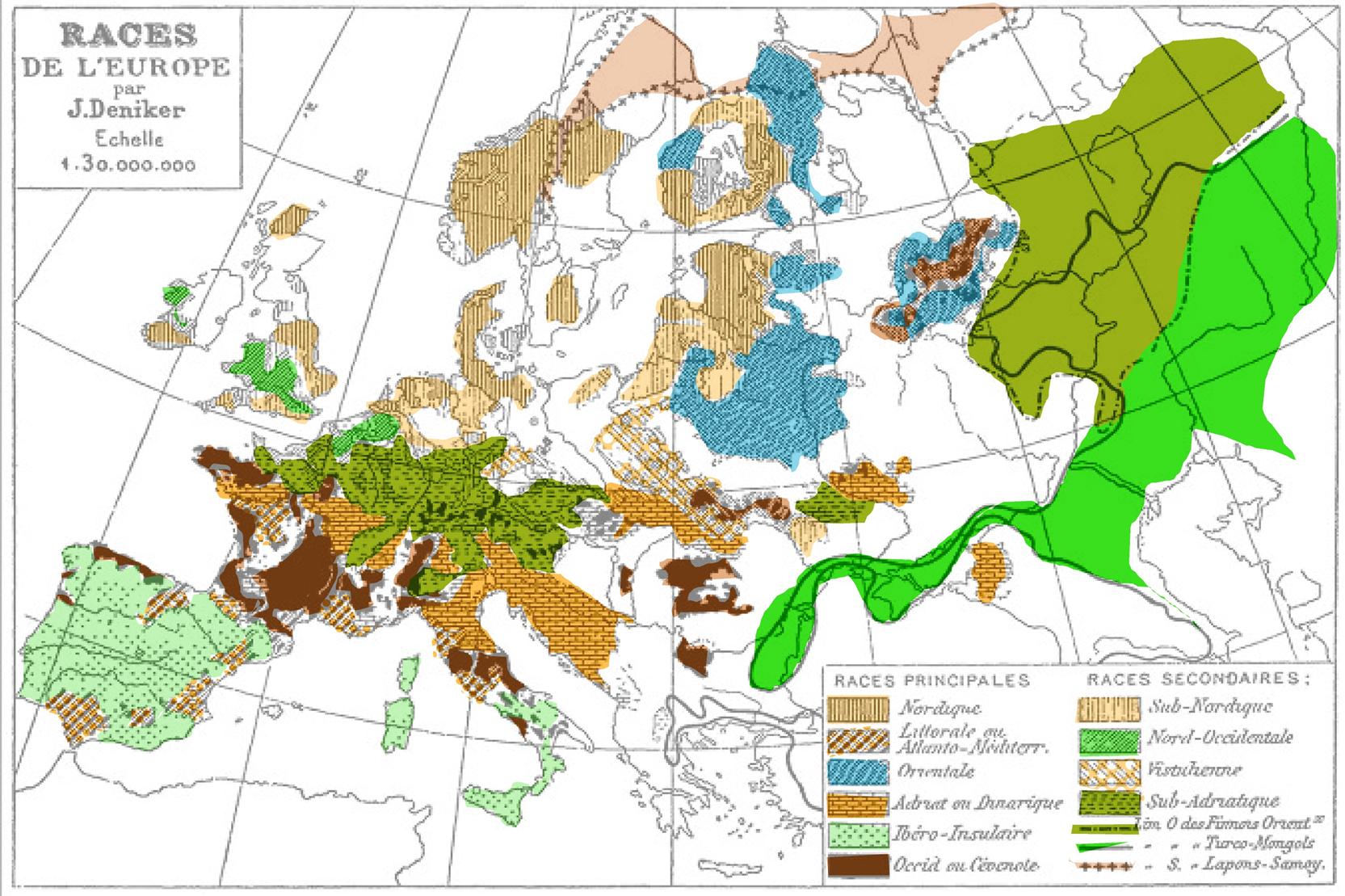|
|
|
|||||||||||||||||
|
|
|
|||||||||||||||||
|
|
|
|
||||||||||||||||
|
|
|
|
||||||||||||||||
|
|
|
|
||||||||||||||||
|
|
|
|
||||||||||||||||
|
|
|
|
||||||||||||||||
|
|
|
|
|
|||||||||||||||
|
|
The
tribes of ancient Gallia Click on names (red letters) of human
varieties (with yellow background) and read about
their decomposition into ethnic subgroups. Notice traditional fallacies and preconceptions concerning the traditional misleading categories of human races. Clickable terms are red on yellow background. |
|
|
|||||||||||||||
|
Ancient Gauls (from P. Bělíček: The Analytic Survey of European Anthropology, 2018, p. 126) |
||||||||||||||||||
|
|
The
Archaeological Disambiguation of Ancient Romance Tribes
The complex of Romance peoples calls for a
detailed dissection that might elucidate the anatomy of their inner ethnic
factions. The very term ‘Romance’ is a controversial misnomer because its
originators were the Roman Marsi, Sabini and Samnites,
who descended from the Hallstatt horseback riders
of Sarmatian origin. They imported the advanced
Iron Age metallurgy to Hallstatt Sarmatids were not populous enough to give the IE
language structures a definite Iranian and Uralic stamp, and so they were
soon outnumbered by Gallic Celts and Iberian Mediterranids.
As a result, in Italic, Gallic and Iberian languages the strong Celtic
element prevails over
Sarmatic peculiarities. When we abandon
the pointless concept of the Romance family, it may be replaced by more
suitable terms of Gallo-Romans of Tardigravettian
origin. Its complex may however be analysed also as a part of the Epi-Aterian family or Epi-Magdalenian
domain. Arguments for the former solution are that Arabic,
Iberian and Italic languages group share one category of determination with
very similar systems of definite and indefinite
articles: French le, la – un, une
and Italic il, lo – uno as compared to Arabic
al- or el – -n. Articles represented a
typical non-IE import of European Bascoid
megalith-builders, who shared k-plurals and definite articles in -k
with Abkhaz kurgan-builders. Epi-Aterians. The idea of Epi-Aterian
family or Basco-Scottish family is based on the
structural unity of West-European megalith cultures, whose patterns were
closely associated with the Berber megalithic complex in Another viewpoint open to disputes
speculates that the Chalcolithic megalithic
builders may be remote descendants of the Lincombian-Ranisian-Jerzmanowician, Solutrean, Aterian, Szeletian people of
Mousterian origin. They lived in caves, applied leaf-shaped lance-heads and
buried the dead under piles of stones in front of their cave abodes. These cavemen were immiserated hosts
of mammoth-hunters who wandered in quest for their herds to Mario Alinei’s Palaeolithic Survival theories have
breathed new life into diffusionist thought and
make it possible to link prehistoric ancestors with modern survivors. They
consider links between Aterians (30,000 BC),
Basques and Berbers, who developed similar leaf-shaped lance-heads and
funeral architecture with round dome-shaped mounds. Leaf-shaped points were
cultivated also by Solutrean horse-hunters (18,000
BC) and flourished also in Lincombian, Ranisian and Jerzmanowician sites (43,000 BC) in
The predecessors of western megalith-builders may have colonised their
Atlantic sites in waves of several prehistoric colonisations: * Aterian (c. 145,000 BP – 30,000 BP)
was a Middle Stone Age industry jutting out of * Mousterians (70,000 BP) represented a
Neanderthal culture extending from western * Châtelperronian
(44,500 – 36,000 BP) was formed by a Mousteroid
culture of denticulate tools that were situated in * Solutrean (22,000 BP), a culture of horse
hunters with leaf-shaped and pressure-flaked industry. It was located in western * The advent of the La Hoguette
megalithic culture (4900 BC) in * The Andalusian Neolithic (c. 4800 BC)
introduced the first dolmen tombs in southeast * The Chalcolithic Almerian culture (3600 BC) with megalith constructions that were lining the eastern coasts of * The Los Millares culture (2900 BC) developed a higher stage of the Almerian tradition of megalith-building architecture as
its direct descendant. It prided on large concentric cupola-shaped mounds. *
The VNSP or Castro of Vila Nova de São
Pedro culture (2700 BC) exhibited the mainstream of Iberian
megalithic cultures importing the typical castro
type of fortified oppida. Its architecture gave
preference to circular roundhouses with round walls roofed by conical wooden
construction. *
The nuraghe (Sardininia, 1900 BC) and
talaiot ( |
|
Map 2. The probable
descendants of the Beaker Folk in the Ancient Roman ethnonymy (from P. Bělíček: The Analytic Survey of European Anthropology,
2018, p. 121) Megalith mounds have to be considered as a
higher stage of simple pile-burials and straw beehive huts in the period when
Scythoid chieftains began to subdue neighbouring
tribes and acquire greater social influence. They spread from Campignian Littoralids. The first Gothids with the Y-haplogroup
I1 came to
|
|
||||||||||||||


